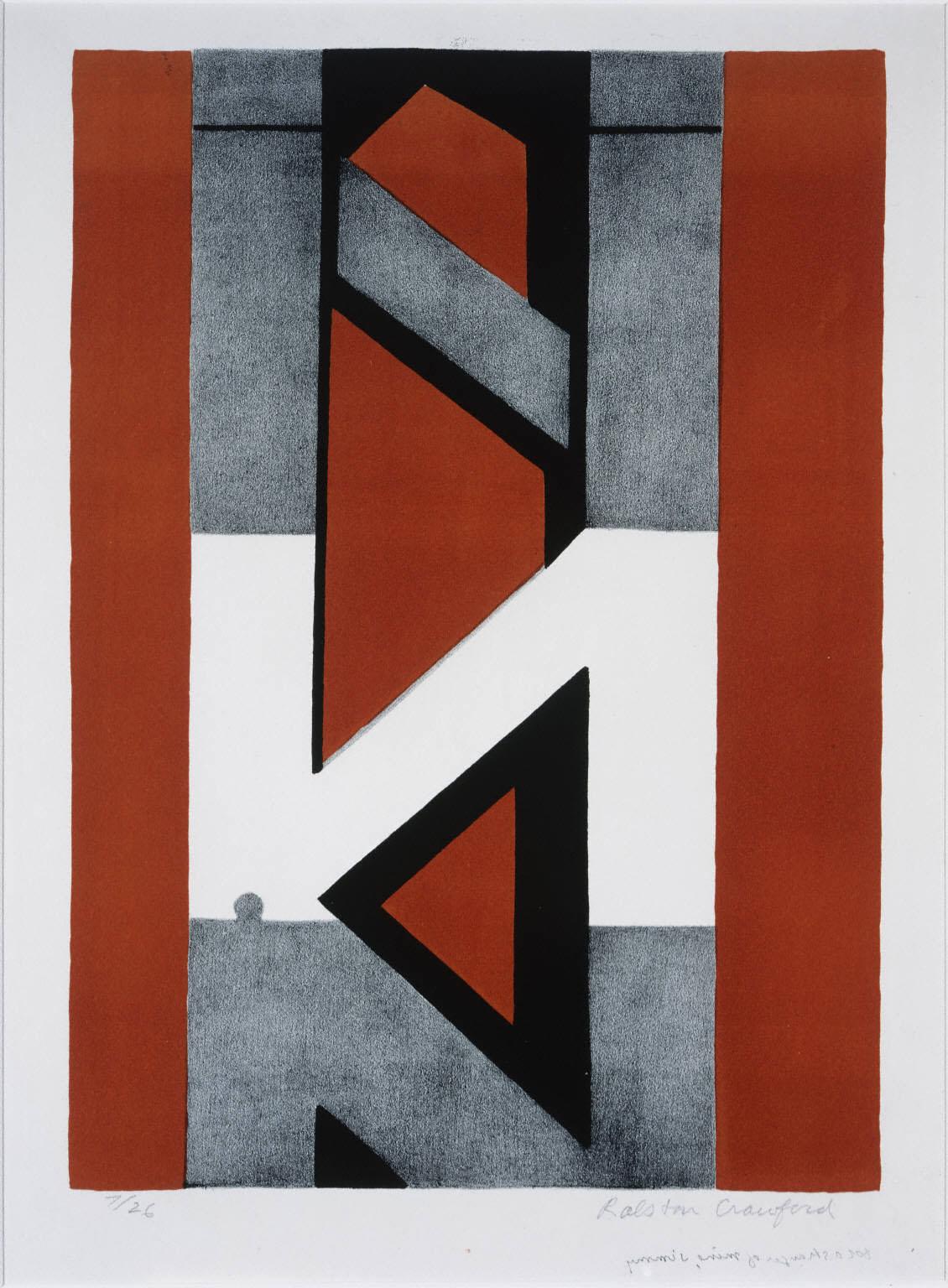Third Avenue Elevated No. 3
Ralston Crawford ( 1952 )

In 1927, Alfred H. Barr Jr., the director of the Museum of Modern Art in New York, coined the term “Precisionists” to describe a group of artists who used simple silhouettes, sharp lines, and geometric shapes to depict the rapid industrialization of the American landscape.[1] Among this group were artists such as Charles Sheeler, Georgia O’Keeffe, and Ralston Crawford.
Working in the space between abstraction and Realism, Crawford depicted buildings and various modes of transportation through geometric forms or compositions. In Third Avenue Elevated No. 3, Crawford drew inspiration from a 1948 photograph he took of the now defunct railway that ran between Manhattan and the Bronx.[2] Using dynamic framing, Crawford created a series of “selections and distillations from the known and physical world.”[3] His focus was less on the legibility of his forms than on the full impact of the image or picture: “I don’t feel obligated to reveal the forms. They may be totally absent to the viewer of the work or even to myself but what is there, however abstract, grows out of something I have seen.”[4]
While Duncan Phillips was perhaps not convinced of the emotional resonances of Precisionism, he saw the importance of the group’s perspective on American art and commended Crawford, whom he congenially referred to as “Rally,” on the “unity, scope, and quality” of his lithographic prints.[5]
Text by Camille Brown as part of the Seeing U.S. Research Project
[1] Jessica Murphy, “Precisionism” (June 2007), in Heilbrunn Timeline of Art History (New York: The Metropolitan Museum of Art, 2000), http://www.metmuseum.org/toah/hd/prec/hd_prec.htm.
[2] Ralston Crawford, Third Avenue Elevated, New York City, https://www.metmuseum.org/art/collection/search/265428.
[3] Interview with John Crawford, son of Ralston Crawford, 1988. Phillips Collection Archives.
[4] Grace Glueck, “Ralston Crawford Is Dead at 71; Abstract Painter and Lithographer,” May 2, 1978, New York Times.
[5] Duncan Phillips, letter to Ralston Crawford, 1957. The Phillips Collection Archives.